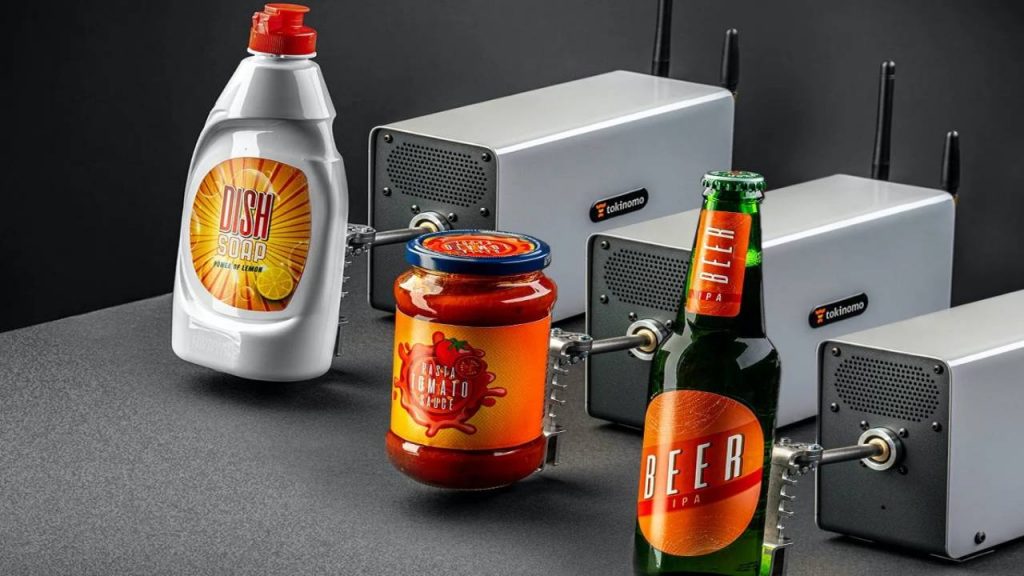2020 was a difficult year for brick-and-mortar stores and 2021 doesn’t seem to be extremely different. While online shopping was on the rise last year, physical stores lost part of their market share due to restrictions and lockdowns.
However, customers still want to receive the full shopping experience which can only happen inside a brick and mortar shop. This is why physical stores should focus on in-store advertising strategies and tactics to attract and retain shoppers.
In this content, we are going to talk more about in-store advertising, the right tools to use in your advertising campaigns, and what are the benefits of using robots for in-store advertising.
Before we dig deeper into the subject, we should start with the basics.
Table of Contents
What is in-store advertising?
In-store advertising is the act of communicating and promoting products inside a physical store. The promotion is made right at the point of sale, where customers are engaged and interested in purchasing.
While it is important to attract customers inside the store, in-store advertising efforts focus on retaining customers and converting them when they are already engaged. Apart from trying to sell to customers, an important part of in-store marketing is offering a great experience to shoppers and increasing customer satisfaction.
In-store advertising has evolved a lot in the last few years. While most retailers still focus on old-school tools, there are many innovations in retailtech, martech and adtech.
Fortunately, in-store advertising is no longer restricted to static cardboard displays and end caps. Robots, AR, VR, and digital displays are stepping inside stores to catch the attention of shoppers and increase the effectiveness of in-store promotions.
Let’s take a look at the best tools and solutions for in-store advertising. Yes, it includes robots too!
Tools for in-store advertising
As we’ve stated before, there are a lot of tools and solutions that can be used for in-store advertising or marketing. Some of them are easy on the budget, but they are not attractive enough, while others might be seen as a big investment, but their effectiveness can’t be disputed.
1. Cardboard displays
Simple cardboard displays are some of the most common tools used for in-store advertising. Unfortunately, they are not as effective as we might like them to be. Moreover, their effectiveness is hard if not impossible to measure.
Due to the fact that we all are bombarded with so much information and promotions, customers no longer pay attention to instore distractions. They enter into an auto mode while shopping, and it might be hard to catch their attention with a simple cardboard display, no matter how punchy your message is.
2. End Caps
End caps are great POP displays because they attract attention and they don’t take a lot of shelf space. People love to find products easily, instead of searching for minutes on end. That’s why end caps are still a good solution for in-store marketing.
3. Augmented reality and virtual reality
The ratio of adoption of new technologies in the retail sector is lower than expected. There are only a few retailers who’ve used augmented reality or VR for their in-store advertising. However, these two technologies can help increase customer engagement, and ultimately increase sales. Since 82% of purchases are made inside the store, why not take advantage of that and use solutions that will actually engage customers?
4. POS Robots
Robots have been everywhere for a few decades. Yet, these technologies are still news for most retailers. There are different types of robots available for the retail industry, from stocking robots to in-store advertising robots.
Including robotic POS displays in your instore marketing strategy comes with a lot of benefits. Let’s see how robots can help you promote your brand or store.
The benefits of using robots for in-store advertising
1. Increase customer engagement
Imagine walking on an aisle and you hear the bag of chips talking to you. No, you are not crazy! In-store marketing robots combine light, sound, and motion technologies and they allow products to talk for themselves.
As you might expect, customers will definitely be disrupted and they will at least take a peek before returning to their cart. Having engaged customers inside the store means more product purchases and a better customer satisfaction rate.
2. Increase sales
In-store promotions usually increase sales by 20% to 30%, if implemented right. However, when brands use a robot in their promotions, sales can increase by 200%, even without price cuts. This is great news for brands who want to increase sales and also maintain the shelf price.
3. Customers remember your brand
Customers will remember the name of a brand when they are exposed to in-store promotions done with robots. If something managed to attract your attention, it’s normal to remember it. In different studies, 40% of customers mentioned that they remember the name of the brand, while 10% remember the product being displayed.
4. Offer an amazing experience
Consumers still like to visit physical stores because they love to have a complete shopping experience. With the help of in-store marketing robots, you can surprise and delight your customers. What do people do when they are living something surprising? They share it with their family and friends. This means you will also benefit from word-of-mouth marketing which is the most powerful type of promotion.
5. It offers data in real-time
Unlike old-school in-store marketing tools, in-store advertising robots can provide data in real-time which is going to help you monitor your promotions. While eCommerce platforms have the ability to gather and analyze data, brick and mortar stores don’t have many options. This is another important benefit of using robots inside the sores.
Technology continues to evolve and to give us amazing opportunities to engage better with customers, sell more, and stay on top of the competition. Using robots for in-store advertising comes with many benefits and that’s why more FMCG brands and retailers should consider them.


